
Feb 20, 2023 | Uncategorized
It is a given that the Costa Blanca has a wealth of beaches and sandy coves with their crystal clear waters and EU blue flags, and it is something that we are all aware of. However, in addition, and just a short distance away from those beaches, you can find the most charming villages in the Mediterranean as well. And now it isn’t just us telling everyone this, because recently, the National Geographic magazine published its list of 100 most beautiful villages in Spain, which means that a visit is definitely on the cards for 2023, and two of these are very close to Residential Resort Cumbre del Sol.
Altea: The Pearl of the Costa Blanca
“With the sun’s first rays, Altea wakes to the screeching of gulls as they faithfully hover over the seagoing craft moored in the port, along with others that, on the distant horizon, are a reminder that this Alicante village was once peopled by fishermen and labourers”; so begins the description of Altea in the article. It comes as no surprise that the “dome of the Mediterranean” makes the list too, but that doesn’t make it any less a matter of great pride. There are myriad reasons for its inclusion, with its narrow streets and whitewashed houses that lie cheek by jowl with the blue dome of its church, it manages to create a pure Mediterranean landscape that makes you want to explore each and every little nook and cranny of the place. From the highest and most ancient part of the village you will be treated to unique views of the two sides of the Costa Blanca Norte, namely, the mountain sierras of Aitana, Bernia and the Puigcampana on one hand, and Punta Albir, the Morro de Toix and the Peñón de Ifach circling the bay, on the other.
In addition, a visit to the Monastery Church of the Carmelitas Descalzas, La Torre de la Galera, which have been declared a Cultural Heritage site, La Torre Bellaguarda, the Palau de Altea and a stroll along the seafront, will provide images and snapshots that will stay in your memory forever.
In the entry on Altea it also mentions the well-known neighbourhood of El Fornet “with its narrow cobbled streets and its white houses festooned with a colourful jumble of geraniums, jasmine and bougainvillea”.
Guadalest, an unmissable mountain trip
Just the mere fact of its history should earn it a well-deserved mention in lists of this kind: Guadalest was moulded both by the hand of man and the force of nature following the earthquakes of 1644 and 1748, when the citadel castle of San José was virtually destroyed. Today it still stands proud and open to the sky with several sections of the wall remaining along with its keep which is still easily recognisable.
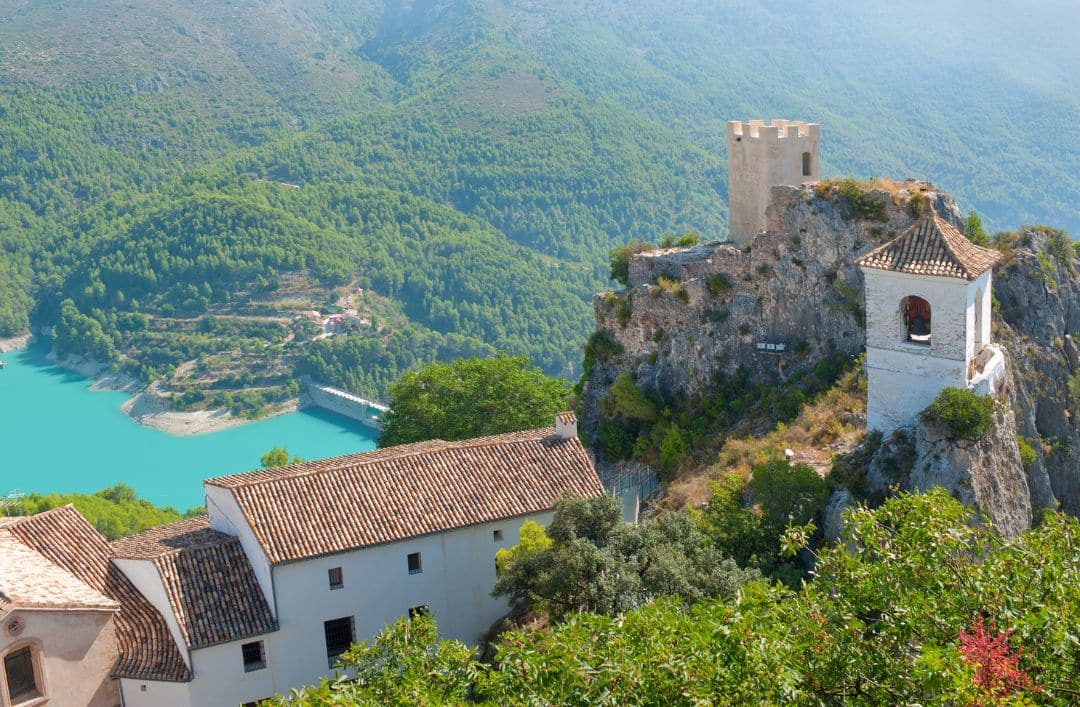
Strolling through the small historic centre, which is reached through the only door in the ancient walls, is like stepping into another world. The town hall square with its statue of San Gregorio and the medieval prison provides a meeting point for visitors. Special mention should be given to the Casa de los Orduña, from where you can access the top of the castle. The village is crowned by the famous castle of the Alcozaiba, which recalls the medieval origins of the village, and from here you can view the mountain sierras of Xortà and Serrella, along with the mountains of Aitana and Bernia.
In the outskirts, you will find the reservoir, wetlands and the dam of Guadalest. This is one of the most picturesque places in inland Costa Blanca, and not to be missed if you visit the village. The water from this reservoir comes from the river Guadalest which, with its blue waters, frames this lovely village. The reservoir, as well as contributing to the charm and beauty of Guadalest, also boasts a really easy and pleasant hiking trail that circles the whole reservoir so you can see the fantastic countryside up close as you breathe in the fresh mountain air.
Altea and Guadalest are as different from each other as they are special. Each one has its own charm and special features that make the villages unique, and it is not the first time that National Geographic mentions them. In its 2022 list, it included the village as one of the five most beautiful villages of Alicante province. Don’t forget to check out our upcoming blog posts where we will tell you more about some of the most special places in the Costa Blanca and the surrounding area.
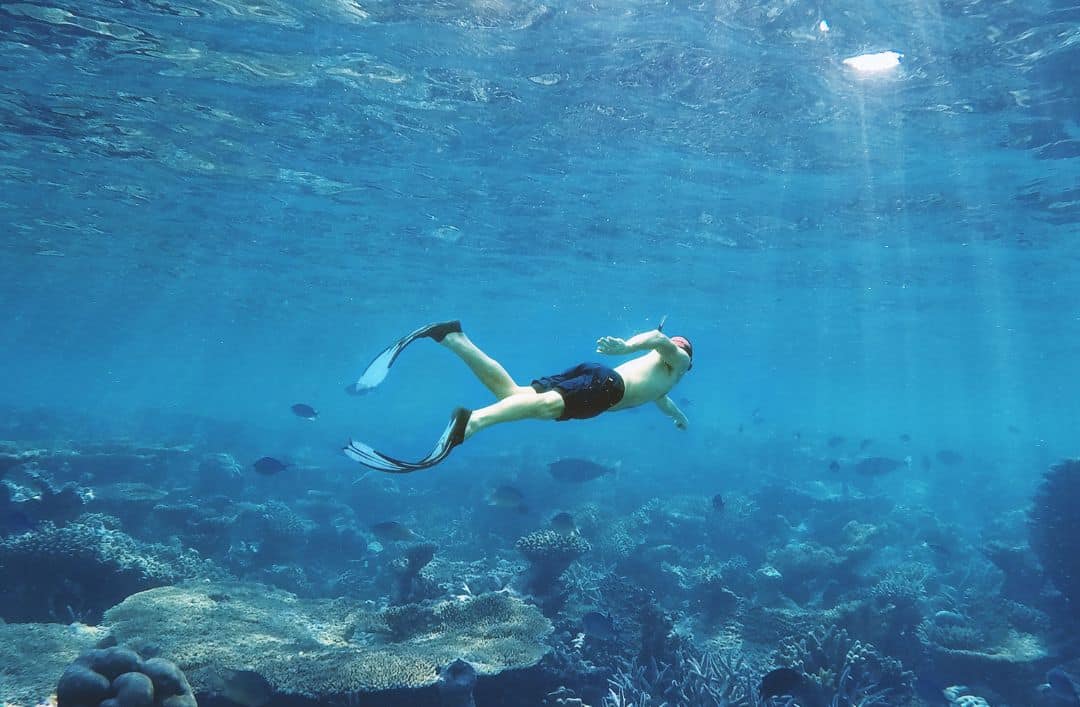
Aug 23, 2022 | Activities/Services, Cumbre del Sol
The Costa Blanca boasts over 200 km of coastline with 170 beaches, many of them with an EU blue flag. Given these dimensions, the area is considered to be one of the best and most fun coastlines in Spain for divers.
The Costa Blanca, and particularly its northern end, is home to some of the most delightful sandy coves and beaches in the Spanish Levante. With water temperatures averaging 20ºC in summer and 14ºC in winter, snorkelling, diving or any other water sport is practically a requirement here. However, 170 beaches are a lot of beaches, and so, would it help if we told you about some of the best ones?
A classic: La Granadella
Considered to be one of the finest beaches in Spain, Granadella is a magical spot where the sea and the mountains merge to perfection. Thanks to the peaceful waters and the seabed of gleaming white sand, diving here is a unique experience and ideal for watching marine life.
If you want more, there is another possibility for diving in Jávea in Portixol, known as the most “instagrammable” beach on the Costa Blanca. What makes it so special? Probably the fact that it forms a bay surrounded by high cliffs.
Diving at the foot of the Peñón de Ifach?
Yes it is possible. We are talking about El Racó, a pebbly little cove with crystal clear waters brimming with sea creatures of every kind, with a perfectly signposted underwater route, and so it is ideal for diving and snorkelling fans.
Los Arcos Cave: emblem of the Costa Blanca
El Poble Nou de Benitachell has one of the best beaches for diving namely, Cala Moraig. This cove harbours some of nature’s wonders among its rocks. Not only that, what makes this place really special is the los Arcos Cave. One of nature’s most stunning spectacles, it has been produced by the sea eroding the rocks over the years to form a cave with natural stone pillars. It is very popular with snorkellers and it is relatively easy to reach. Other interesting routes for diving in Benitachell can be found in Cala Llebeig and Cala Testos, and for more information about these beaches check out this link.
For those seeking something completely different, there’s nothing better than spending a few days at the impressive DreamSea Mediterranean Camp, at Cala Moraig, which has attained almost cult status with Mediterranean lovers, for its amazing glamping experience. Nature + Sea + Activities, what more could you ask?
Close to Benitachell, in the municipal district of Benissa, you’ll find cala Pinets. This sheltered yet rather wild little cove has a pebbly shore. It is ideal for switching off while you snorkel or just decide to spend some time communing with the sea.
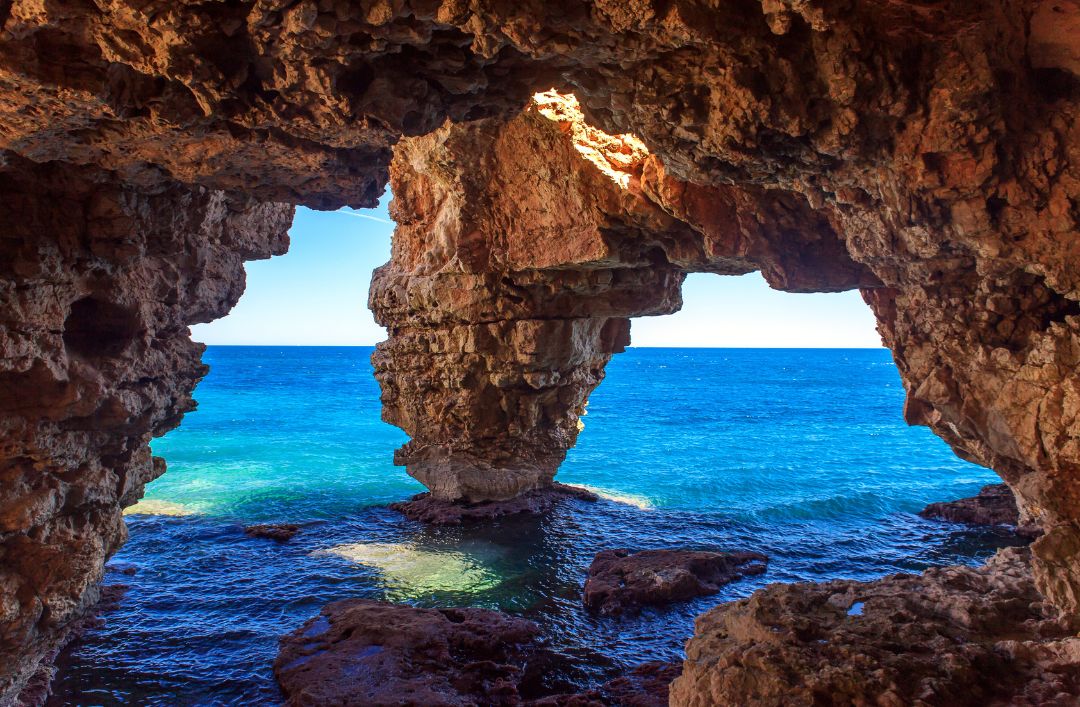
And there’s more! Altea, Dénia…
As we mentioned at the start of this blog, with over 200 kilometres of coastline there are many (but never too many) beaches. Not all of these are found close by villages and little known spots. In popular towns like Altea you can also find some interesting possibilities for having a good time such as Mascarat beach. Furthermore, in Dénia you will find the clearest most transparent waters of the Costa Blanca at El Fresquito beach, which may not be the best known, but this is precisely where its charm lies.
Now perhaps you have a better idea of how many beaches, coves and caves there are of every kind and for every taste. Make the most of them because there is still a month of summer left and you can enjoy every single one, and then tell us which is your favourite! Don’t miss out on our coming artícles about other activities and things to do on the Costa Blanca Norte.
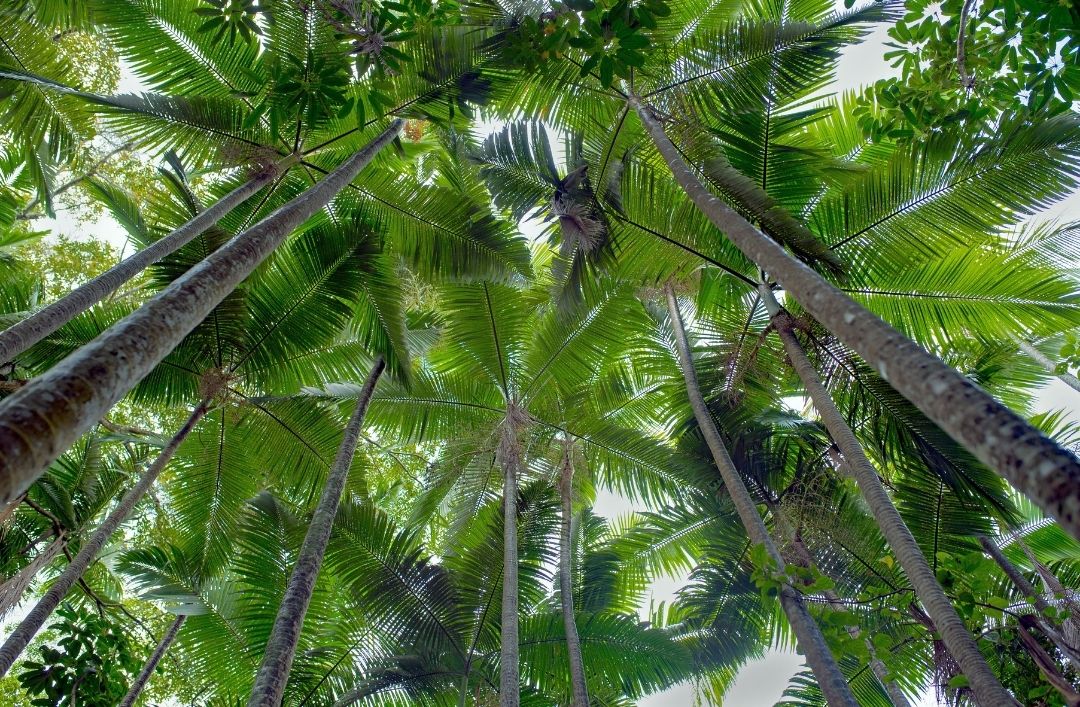
May 23, 2022 | Events, Other towns, Otros pueblos
Promoting identity, protection, and preservation of natural and cultural heritage is considered to be especially valuable for humanity. This is, and for a long time now, one of the main works of UNESCO (United Nations Educations, Science, and Culture organisation). The title World Heritage Site is a distinction for these types of places. In the Costa Blanca, and around it, we’re lucky enough to have a few of these places.
Before talking about these marvels, we want to briefly clear something up. Firstly, there’s two main types of heritage. “Cultural heritage”, which refers to monuments, groups of buildings and sites that have historical, artistic, or archaeological value. In this category, you’ll also find places with scientific, ethnic, or anthropological value. “Natural heritage” refers to exceptional physical, biological, and geological formations. This goes for animal habitats, endangered plants, and area that have scientific, conservation, or visual value. On the other hand, we also have “Intangible cultural heritage”, which includes living inherited practices and expressions from our ancestors. This is heritage that is passed down generation to generation, like oral traditions, scenic art, social customs, rituals, festivals…
All along the Costa Blanca and all around it, we have places that include all three types of heritage. Take note and plan a weekend escape to visit them!
El palmeral (Elche)
Over 200,000 palm trees look down on the urban centre of Elche. Since the year 2000, the place of the Costa Blanca has become a World Heritage site.
The Mediterranean diet
This diet was declared Intangible Cultural Heritage in 2013, the reasons being it’s richness, variety, and health benefits. You can enjoy the Mediterranean diet in all its form in the Costa Blanca. And along the whole coast of the Valencian Community! From markets where exquisite raw materials are sold all the way to the best restaurants that have kept this tradition and the essence of Mediterranean cuisine. Flagship restaurants known for exploring this cuisine, respecting its differentiating features, and being recognised worldwide for its variety of flavours and textures and for its health benefits.
Cave art
Cave art in itself is a unique cultural manifestation. And it also represents the prehistoric society that lived in the place where the Costa Blanca is today. In and around the area, there are plenty of these depictions, but if we had to recommend one in particular, we’d go for the following: Moixent with the drawings Abrigo de la Penya and Abrigo de Gontran. You can also visit the ones in the Caroig massive (Cueva de la Araña y abrigos del Barranco Moreno).
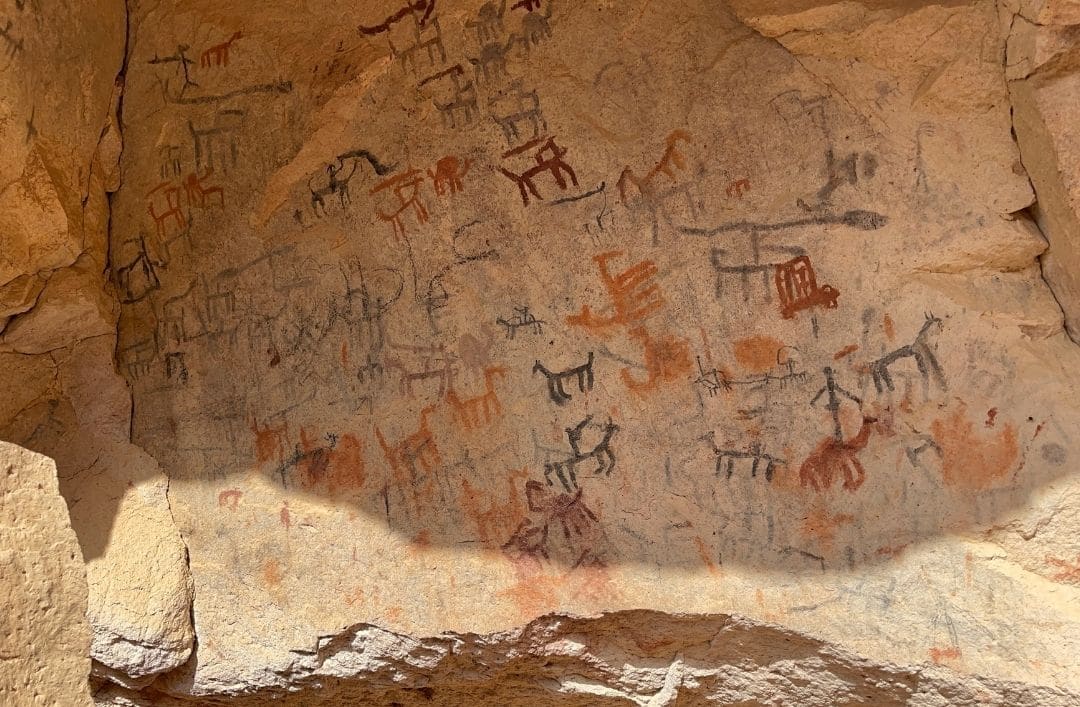
The mystery of Elche (Elche)
Declared as Oral heritage and Intangible world heritage in 2001, the Mystery of Elche is a cultural treasure in the city. This work of medieval origins is also known by the name of La Festa. It embodies all the years of the Basílica de Santa María de Elche’s history in the month of August. This activity celebrates the festival Virgen de la Asunción (the Virgin of Ascension).
Strong cultural legacy
The cultural legacy of the Costa Blanca brings together all kinds of activities and places that are steeped in history and tradition. Moors and Christians in Denia, Alcoy and Calpe, festivals in Altea and Alicante, Moorish quarters and castles in Guadalest and Javea are some of the best known experiences in the area. The options are almost endless and we encourage you to discover this land.
From rock castles at the foot of the Mediterranean, to those narrow cobbled streets where the smell of the sea mingles with the refreshing scent of jasmine, to massive parades of people, the magical Night of San Juan… everything feeds into an immense tradition and legacy.
In addition to the World Heritage Sites that we have reviewed in this entry, the Costa Blanca has some of the most beautiful historic centres in Spain. Clear examples are the Barrio de Santa Cruz in Alicante and those of Javea, Denia, Benissa and Teulada. All of them sharing one common feature: the Mediterranean sunlight.
Don’t miss our blog articles where we’ll give you more ideas on plans all over the Costa Blanca.
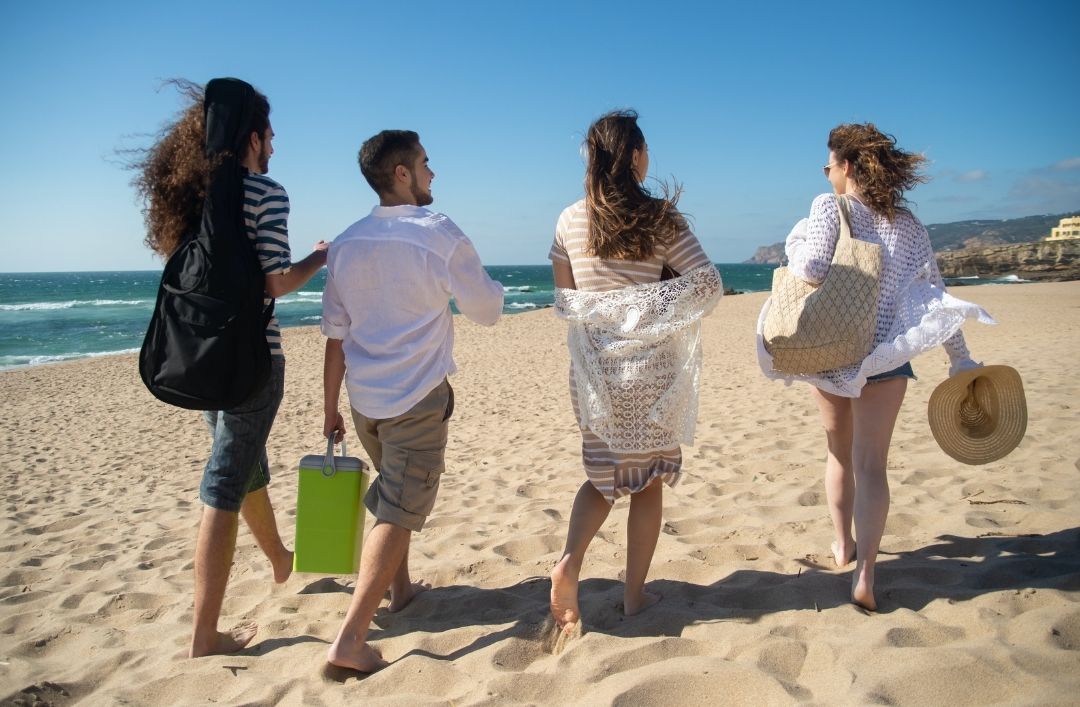
Mar 29, 2022 | Activities/Services
We almost always associate the coast with summer, tourism, sun and beach, but not all plans have to be in summer! Spring is the perfect time to experience the Mediterranean climate. Proof of this are the luxury plans that are sure to make you enjoy Northern Costa Blanca, in Cumbre del Sol and its surroundings.
Gourmet Cuisine
For the most exquisite and demanding tastebuds, Northern Costa Blanca is the perfect place thanks to the fusion of the Mediterranean soul with exquisite raw materials along with the research and professionalism of the best chefs, such as Quique Dacosta, Alberto Ferruz or Nazario Cano, among others.
La oferta gastronómica es muy rica y variada, desde tapas elaboradas en diferentes establecimientos de la zona, hasta la cocina de más alto nivel, todo ello maridado con excelentes vinos elaborados.
The cuisine is rich and varied, from tapas prepared in different establishments in the area, to the highest level of cuisine, all paired with excellent wines.
There are 11 Michelin-starred restaurants in Costa Blanca.
We recommend you to visit La Cumbre Restaurant in Cumbre del Sol, a long-established restaurant that always prepares an excellent menu with local seasonal products and the recently distinguished as the best European restaurant Quique Dacosta in Dénia, both places are the real deal in the area.
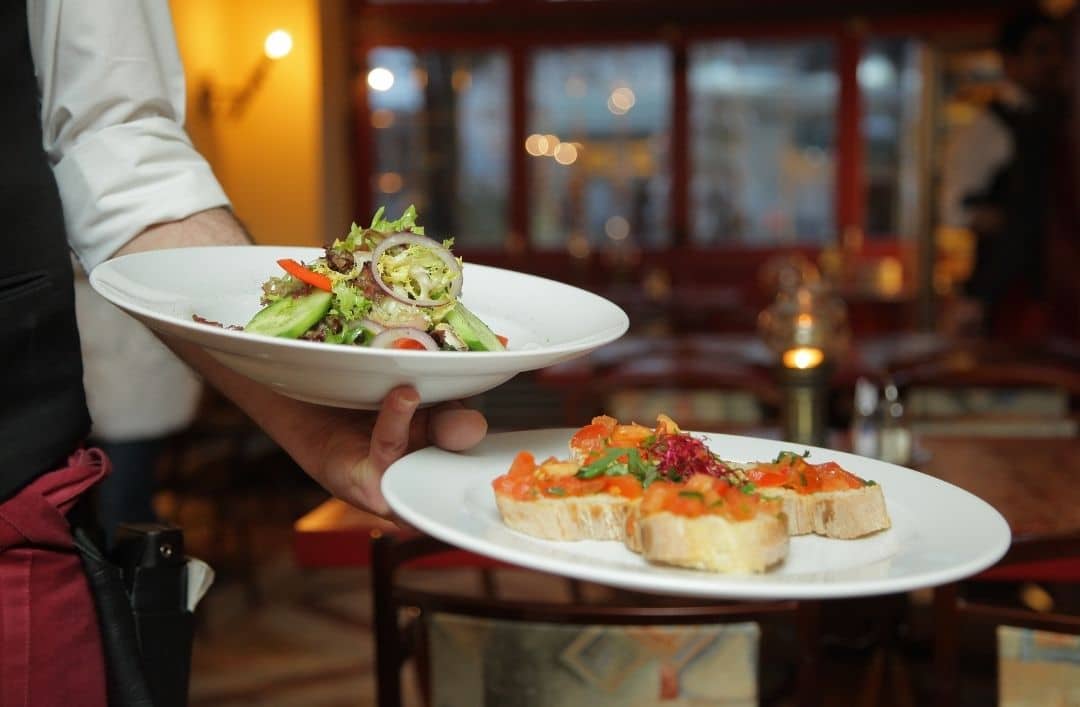
Wine Tourism
Wineries, tastings in the Marina Alta, artisans, vineyards… Northern Costa Blanca, and more specifically the Marina Alta region, is one of Spain’s longest-standing winemaking regions. In fact, the province of Alicante is home to the oldest remains of wine production on the Iberian Peninsula. Northern Costa Blanca is deeply rooted in wine culture. The range of plans is so extensive that we invite you to read our article on places not to be missed if you consider yourself a true wine lover.
Spas
Enjoying spring in this area is almost a must, but even in the best moments and places, you need to take a break and breathe. What better way to do it than in thermal pools, in jacuzzis, or with a hydromassage treatment? You should always take care of yourself inside and out and the Pure Wellness centre in Cumbre del Sol is the perfect option if you want it all without going too far.
Boats, yachts… Enjoy the Mediterranean!
Taking advantage of the fact that in spring we’re not in sweltering heat, it’s a real pleasure to be able to go out for a sailboat ride and explore the coastline. Coves, paradisiacal beaches, and cliffs give way to an atmosphere of exclusivity and luxury, where a bottle of cava or champagne is always welcome while admiring the wonderful views.
The marinas of Marina Greenwich (Altea) and Dénia are the epitome of style, distinction and charm in a superb location at the foot of the bay with stunning sea views. And if you fancy cooling off and taking a dip in two of the best coves on the Costa Blanca North, take note of Cala Moraig, with a blue flag, and Cala Llebeig, both within Cumbre del Sol.
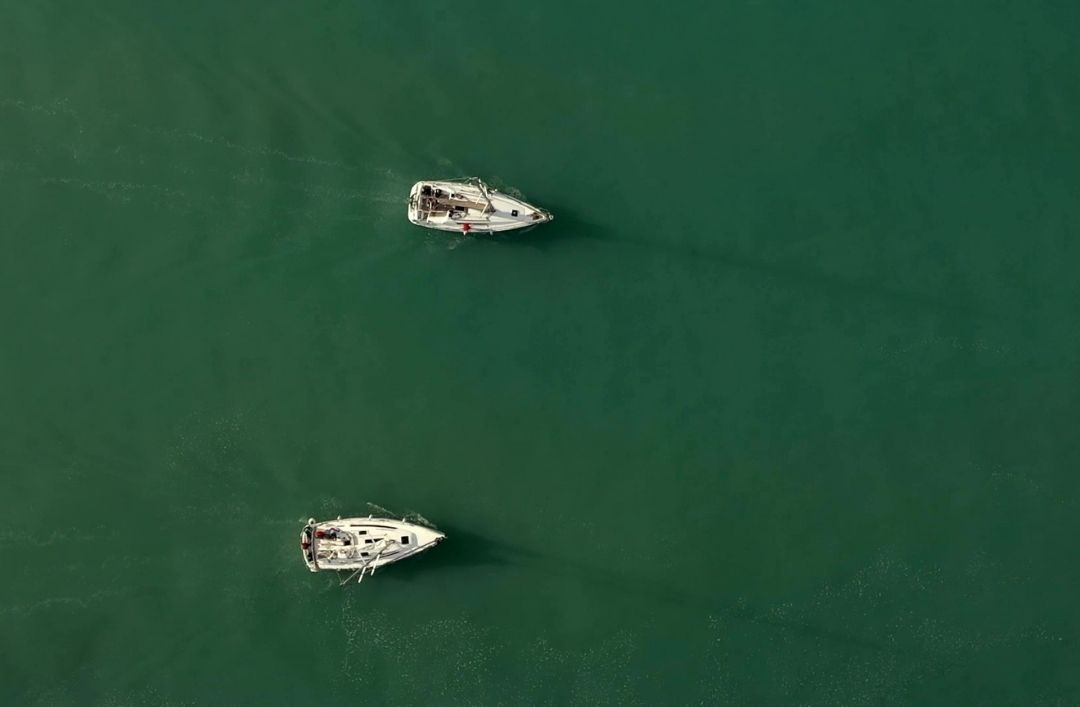
Art to get inspired
Northern Costa Blanca is, historically, an area of artists and artisans of all kinds who have decided to settle here, and the light of the Mediterranean, coupled with the bohemian atmosphere of Costa Blanca has been a source of inspiration throughout history. Unique pieces, such as handmade jewellery, sculptures, paintings… all of them priceless works that come out every year from small workshops spread all over the North of Costa Blanca.
The town of Altea is home to the Faculty of Fine Arts of the University of Alicante and is considered one of the artistic and cultural capitals of the Valencian Community, a home for poets, writers, painters and all kinds of artists.
There is also room for other seasonal activities: theatre, music and various art exhibitions in the numerous cultural centres such as the Palau de Altea, el Auditori Teulada-Moraira, or the Espaid’ArtContemporani Salvador Soria, among others.
The most important thing – Family
We should also mention the wide choice of family plans to enjoy with the little ones. Day trips, guided tours, nature walks, amusement and water parks… these are just a few examples of the many family activities that the Costa Blanca North has to offer.
As you can see, there’s so many cultural activities to enjoy close to Residential Resort Cumbre Del Sol. There is no shortage of reasons to choose Northern Costa Blanca to enjoy spring. Have we left anything out? Tell us about it.
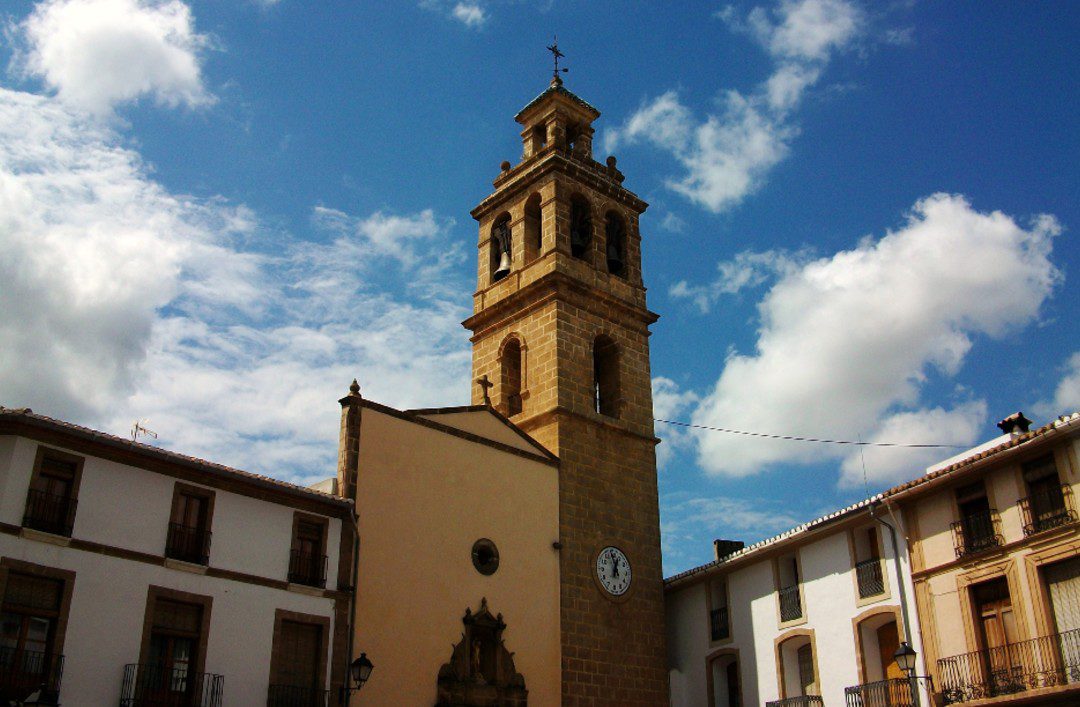
Nov 5, 2019 | Benitachell, Cumbre del Sol
After the recommendations we made in our first and second post, we’d like to bring you more cities close to Residential Resort Cumbre del Sol you can visit. This time we are focusing on cities with a more relaxed lifestyle, and with a much smaller population than the previous cities.
You don’t have to go very far to discover two small towns like Gata de Gorgos and Teulada-Moraira, both located in the comarca of Marina Alta, just a few kilometres away from Benitachell. Villajoysa in Marina Baixa is, and there’s no better way to say it, the sweetest way to end your journey.
Gata de Gorgos: craftsmanship showcases the city
Just 18 kilometres separate Cumbre del Sol from the town of Gata de Gorgos, which is in the interior of La Marina Alta. The contrast between the hustle and bustle of the coastal towns and this small town can be felt as soon as you set foot inside of it.
Something else that stands out as soon as you enter Gata de Gorgos is the presence of artisanal products like guitars, hats, baskets and wicker bags. The fact that the population is just under 6000 inhabitants won’t stop you from finding ten hat factories, seven specialised in bags and two in guitars.
Among the town’s many spots to explore we highlight its Cuevas Rojas or any of its many hiking trails. When you finish in Gata de Gorgos, you can head back towards the Costa Blanca seaside.
Teulada-Moraira: viewpoints to gaze at dreamlike beaches
Teulada and Moraira are two must-see stops in La Marina Alta. Speaking about them at the same time is just a question of location: Moraira is a part of the Teulada municipality (also known as the Teulada-Moraira municipality). Before reaching the coast, stop by the principal town of Teulada and discover the town walls that once surrounded it. Continue your route towards the coast calmly and enjoy the natural nooks you’ll encounter throughout your journey.
When you reach Moraira you can choose where to start from. You have viewpoints like Portitxol and L’Andragó, where you can rediscover the blue of the Mediterranean. You can opt to walk along its eight-kilometre beach while you decide if you want to go for a swim or not, or you can ponder if you should eat at one of its many restaurants before you leave. A high percentage of Moraira’s population are from abroad, which is why you can try dishes from all over the world.

Villajoyosa: the sweetest tradition
The last stop before returning to Residential Resort Cumbre del Sol will end the journey on a sweet note. Villajoyosa, in the comarca of Marina Baixa, owes its fame to an excellent chocolate tradition, thanks to the different sweets factories you’ll find here.
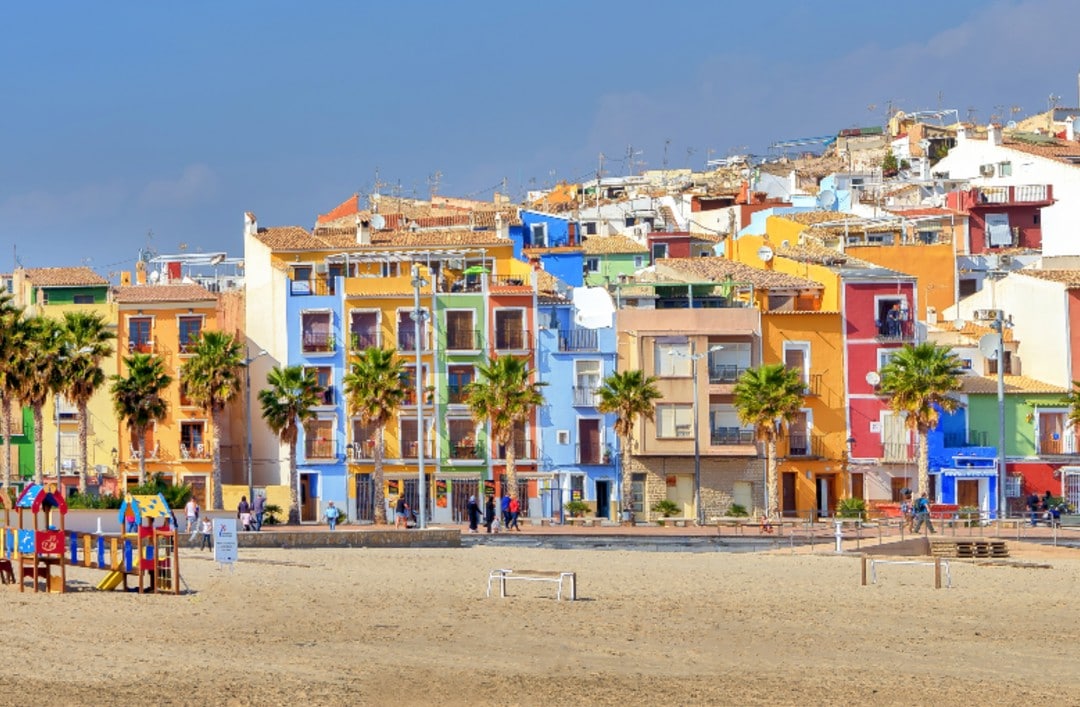
Don’t get too full on dessert and make sure to walk through streets like Arsenal, del Pal, Pou and Sant Pere so you can witness the most photographed and postcard-worthy part in La Vila: the colourful facades of its homes. Don’t miss out on the chance to discover the old city, where you will find the church of Nuestra Señora de Asunción, the Torre de Sant Josep (Saint Joseph’s Tower), the XVI century Torres Vigía and the walled enclosure that used to surround it.
All these municipalities are found less than an hour away from Residential Resort Cumbre del Sol and you can enjoy them any day of the year. Keep an eye on our blog to discover more must-see spots on the Costa Blanca that you can’t miss out on.












